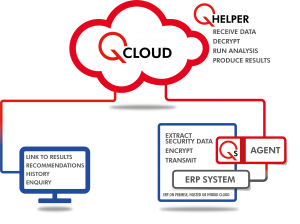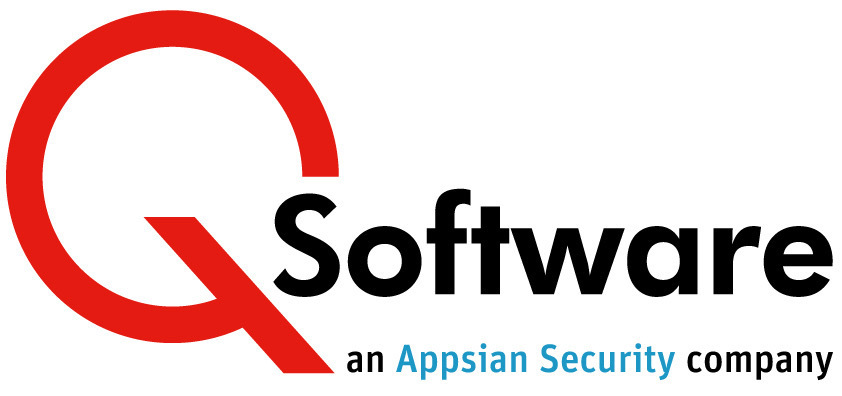QCloud License Audit:
Get an accurate view of your JD Edwards license usage
Does your JD Edwards license support the changing needs of your business?
 As your business grows and changes, it’s important to ensure that your ERP licensing is aligned with your current needs, but until now, that was far easier said than done!
As your business grows and changes, it’s important to ensure that your ERP licensing is aligned with your current needs, but until now, that was far easier said than done!
QCloud License Audit is a Cloud-based service which analyzes the access of users in your JD Edwards system to identify your licensing requirements. It also analyzes actual ERP usage to help you identify users with redundant access. Easy to set up and use, it delivers results within hours.
QCloud License Audit can help if you:
- Want to understand your JD Edwards license position
- Need to establish how many JD Edwards licenses you require to support your current business operations and planned changes
- Suspect that you may be under-licensed
- Need to prepare for a visit from the Oracle License Management team
- Are considering converting to named user licensing from a different licensing metric
- Want to assess and plan your future licensing needs
- Would like a clearer view of exactly who is using, or has access to, the ERP modules.
How the service works

Simply login to QCloud to submit your audit request. On the first run, you’ll receive an email with instructions on how to download and configure QAgent. This will take around 30 minutes, and it’s the only part of the process that needs technical assistance.
QAgent collects the necessary information from your ERP system, encrypts it, then pushes it to QCloud for analysis.
The audit is usually completed overnight, and you’ll receive an email with a link to access the results via QCloud. The results can be viewed by authorized users from anywhere, at any time.
What the results show
The results give you an accurate view of actual usage over 3, 6 or 12 months as required, and provide detailed forensic evidence to help you understand your licensing needs and support your negotiations with Oracle.
QCloud License Audit analyzes your ERP usage, producing counts and lists of users of each of the JD Edwards Product Suites/Modules as identified in the Oracle Price List. It gives you:
- Summarized statistics on users of each Product Suite (e.g. Financial Management Suite)
- Detailed statistics on users of the Modules within each Suite (e.g. Accounts Payable or Job Costing).
You can view a summarized list of all the users in your system, or search for specific users and drill down to find out which modules they can access.
The results can be viewed through interactive enquiries, and you can also export results to a spreadsheet for forensic evidence or further analysis.
Watch a short demo
Why choose QCloud?
QCloud analysis and reporting encapsulates Q Software’s 20+ years’ experience of working with JD Edwards. We understand how JD Edwards works.
Using QCloud, you will benefit from the in-depth knowledge of our security, audit and development experts and be able to produce accurate audit reports efficiently, with no technical effort.
QCloud License Audit is also available for Oracle E-Business Suite.
Benefits
- Find out if you're under-licensed
- Forensic evidence shows the true user count for licensing purposes
- Accurate usage information facilitates a mutually satisfactory deal
- Provides an extra level of scrutiny over security
- Obtain better usage data to inform licensing decisions
- Be better prepared for Oracle license negotiations
- Promotes good Software Asset Management practice
- Tighten up security by identifying users with too much access
Features
These are users with security which enables them to carry out transactions in the Product Suite/Module, including access via Menus and Fastpath. Note that every user with access to a module is required by Oracle to have a licence, regardless of whether they have actually transacted.
These are users who have updated tables within the Product Suite/Module. Note that read-only users are not included in these counts and lists as they don’t need to have a license.
You can drill down to find out which programs they used to update the tables and the roles that gave them this access.
If you wish, you can input details of your license entitlements, for easy comparison of actual usage vs allowed amount. For each module, you can specify the Number of Users allowed, and/or the Number of Systems allowed. These values will be displayed under Original Licenses in the audit results.
You can choose whether to view the data in a Graphical or Tabular View, with the ability to toggle between the view options.
You will receive an email to notify you when the results are ready, including links to access them via QCloud. The results can be viewed by authorized users from anywhere, at any time.
The results can be viewed through interactive enquiries and you can export the full audit results to an Excel file for further analysis. You can also quickly export the data in the results screen that you are currently viewing.
The Excel file is immediately available for you to open within QCloud, so you can print it off or email it to someone, e.g. to check whether these users should still have access:
Discrepancies between the number of Users with Access and Transacted Users may indicate that some users have access that they don’t need and, perhaps, shouldn’t have. This could lead to a security risk.
Removing redundant access can:
- Free up licenses for other users
- Enable you to align your license requirement with your actual usage ahead of an Oracle License audit
- Improve your security – users should only have access to the applications they need to do their job.
The results show you exactly who is doing what in your JD Edwards system, which can sometimes uncover unintended or unauthorized access rights.
You can use this information to clean up the Role assignments and remove undesirable access. This may also reduce your license liability.
All data ‘in-flight’ and ‘at rest’ in QCloud is encrypted and QCloud uses a Multi-Tenant architecture, so your data is held in a private area and can never be seen by other tenants.
The service is available to any JD Edwards EnterpriseOne customer – you don’t need to install Q Software applications to use it. The only thing you need to download is the Q Agent to gather the data.
This can make it easier to comply with local regulations on data transfer and privacy.
